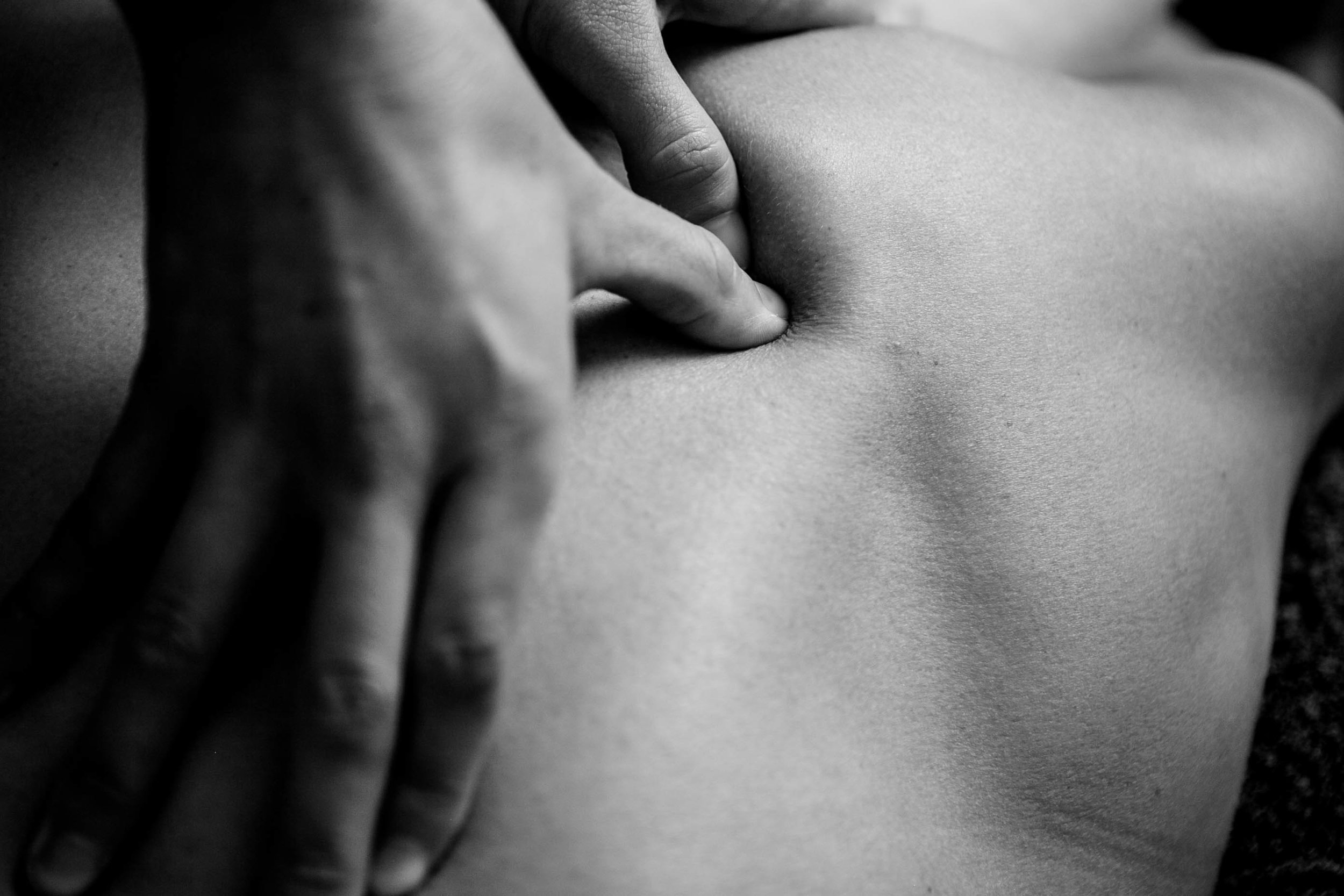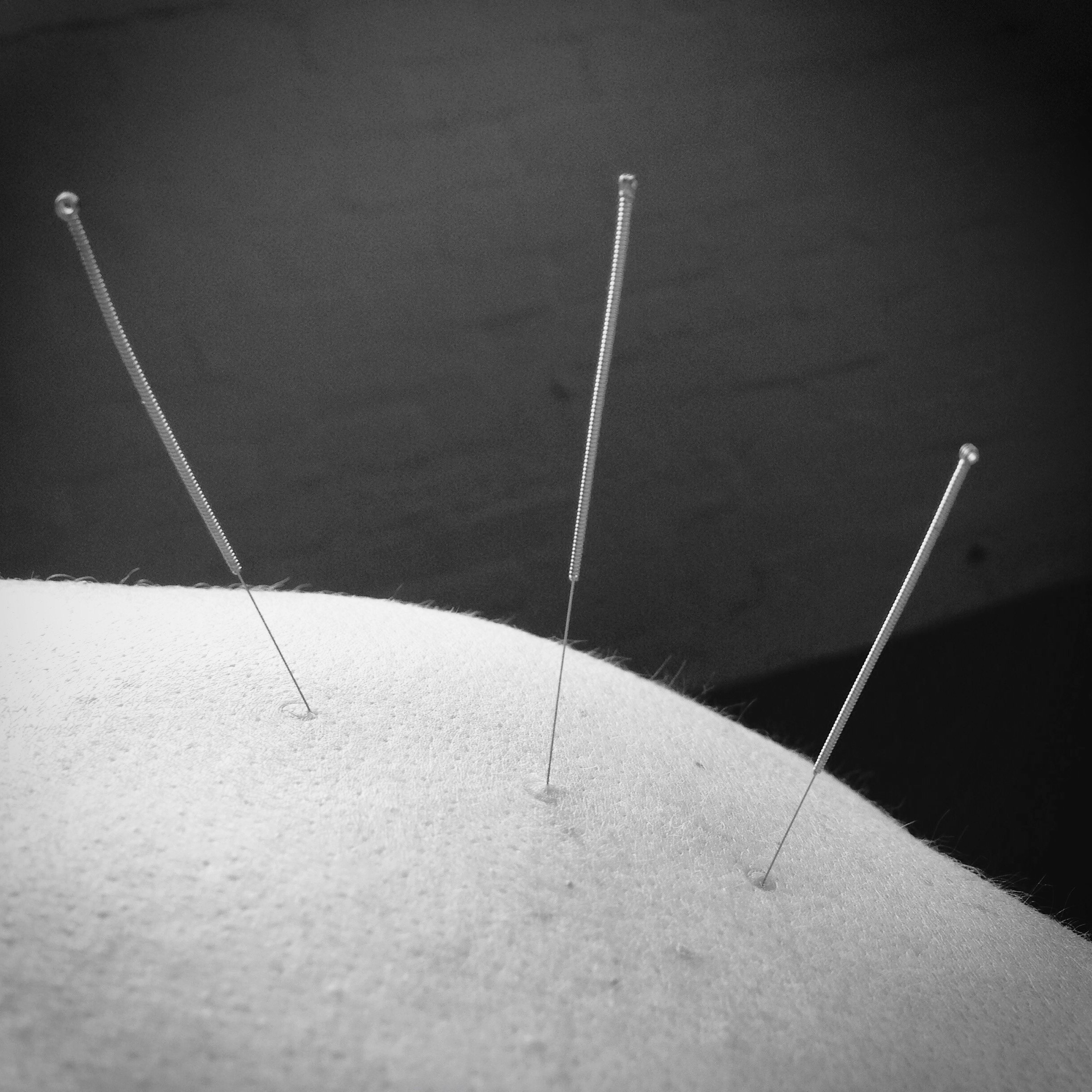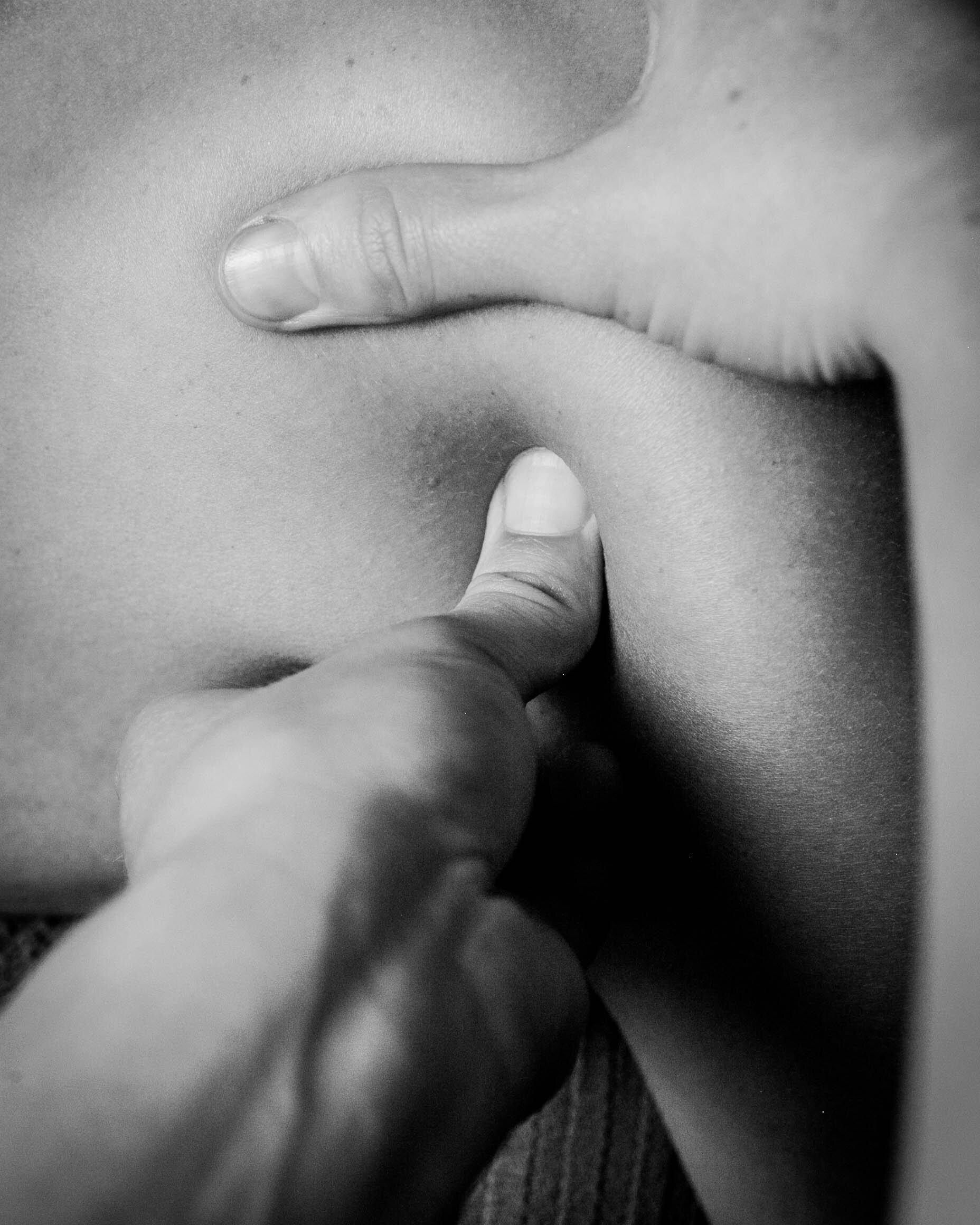Myotherapy
“Trigger Point” release technique for shoulder pain
What is Myotherapy?
“Myo” means muscle. So a Myotherapist is a muscle specialist. When a muscle is in pain or injured, a Myotherapist is a great person to seek out to resolve your pain.
Although we specialise in muscles, we also treat conditions like sprained ankles, wrists (tendons, ligaments), disc injuries (padding between the vertebrae), numbness and tingling (impinged nerve) and bursitis (inflamed fluid filled sack within a joint) .
Why? Because muscles are either connected to or have the ability to influence all the above.
Reason being, when we’re treating a muscle we can’t help but effect the tendons, ligaments, vertebrae positioning and their discs and joints of the body since they are all connected to the muscle via the fascial web.
But we don’t just use our hands, we might use dry needling, cups, stretching, corrective exercise and joint mobilisation.
Dry Needling
… is simply the act of inserting a tiny, acupuncture needle into the centre of a “Trigger Point” (a painful site in the muscle).
When performed with accuracy this technique deactivates the Trigger Point which significantly reduces - or nullifies completely - the pain response in the muscle.
Dry Needling muscles through the back.
Trigger Points
Are like the holy grail for us Myotherapists. If we can deactivate a Trigger Point we can swiftly break the back of a pain pattern.
Below is an excellent example of a Trigger Point in action taken from Travell and Simons “Myofascial Pain and Dysfunction” book (aka the Myotherapy bible).
Glute Minimus Trigger Point referral pain pattern - Travell & Simons Myofascial Pain and Dysfunction
This image shows how you may be suffering from a deep ache in your hamstring or glute or even ankle pain when in fact, the culprit of your pain is sitting much higher in the muscle of the hip (where the X’s are).
A Myotherapist who commands their craft will have a well-developed memory for each Trigger Point location in each muscle. Plus, an experienced ear will be able to hear the description of your symptoms and trace it back to the Trigger Point at play.
Active Trigger Points
Every muscle in the body has Trigger Points, it’s just whether they’re active or not.
When they’re active they can be completely debilitating. Causing you sharp searing pains during movement or a deep low and constant ache that keeps you up at night. They can also cause numbness, tingling and inflexibility of the muscle.
Perhaps most importantly, active Trigger Points will reduce the strength of a muscle, an implication that has huge ramifications for setting up poor biomechanical habits within your body.
How Do You “Deactivate” A Trigger Point?
You simply press on it for 30 seconds - 2 minutes to deactivate it. It looks something like this.
Deactivating a Trigger Point in the shoulder
By pressing on it - or by inserting a needle into the centre of it - you change its state and cause a chain reaction in the body whereby the sarcomeres (tiny sliding filaments within the fibres of the muscle that are responsible for muscle contraction) initiate a “twitch” response.
Or, an involuntary contraction-relaxation phase. This relaxation phase is the one we’re looking for, it resets the muscle back to its original, pain-free resting length.
It may sound complex but this process is quite innate. It’s why you might start to rub the muscles in your neck when you’ve been sitting too long at the computer. Whether you know it or not, you’re unconsciously trying to deactivate a Trigger Point.
Why Is Myotherapy Different At Urban Leopard?
It’s true, we treat a little differently from a traditional Myotherapist and there are a few reasons why.
SLOW
Our strokes are slower in pace than the norm. It allows us to treat quite deeply and helps the client can relax into the stroke rather than tense up against the pressure. Pace and flow are important ingredients that enable a muscle to release.
Wax
We use a completely natural and specially formulated wax that we make on-site. It’s a combination of beeswax, shea butter and coconut oil. The beeswax allows us to grip the muscle rather than slip over it, forcing a slow stroke with a lot of friction.
Beeswax, shea butter and coconut oil. All natural and made on site.
HEAT
The grippy consistency of the beeswax causes friction within the stroke generating heat which makes the connective tissue (fascia) underneath the skin more malleable, allowing us to be able to shape it into more pain-free positions.
Once you walk out the door your connective tissue will cool and set in this new position. We will have quite literally changed the posture of your muscle by affecting your connective tissue.
This is why our treatments stick.
Our hands-on work is like using a fine-tooth comb through thick, knotted hair. The strokes we use to release your muscle and connective tissue are very deep, deliberate and sustained. We leave no stone unturned when it comes to searching for painful, dysfunctional muscle or tight connective tissue.
Myotherapy releasing trigger points (knots) in the lower back
Myotherapy in Brunswick East
The Myotherapists at Urban Leopard are dedicated to making sure we’ll do everything in our power to get you pain-free. We work with great passion in our clinic to alleviate your symptoms of pain with very specialised myotherapy techniques but also set a program of strength training to address the root cause of your pain so it never comes back.
We find that our clients’ habitual lifestyle patterns often create a poor posture which can lead to localised soft tissue pain and also referred aching pain.
Isn’t Myotherapy Just A Massage?
“While myotherapy is heavily based on massage techniques, the focus on clinical-based assessment and trigger point patterns means that it’s a bit more strategic than “just” a massage.”
You know just how wonderful a good massage can be. Whether it is a relaxing aromatherapy massage at a spa, or a massage for sports injury – the feeling you get afterward can be really freeing.
While myotherapy is heavily based on massage techniques, the focus on clinical-based assessment and trigger point patterns means that it’s a bit more strategic than “just” a massage.
Myotherapy focuses on the myofascia – the muscle and connective tissue system that separates compartments of muscle but also connects the entire musculoskeletal system. This amazing tissue system connects muscles to the tendons to the ligaments to the bones and even to the nerves. It is like scaffolding for the muscles. Manipulating the myofascia with a focus on trigger points changes posture and realigns muscles, reduces referred pain, and can rectify a wide range of complaints from back pain, injuries and even chronic pain like fibromyalgia.
Our Myotherapy service in Brunswick East goes beyond a massage. We also use techniques like cupping and dry needling in Brunswick to deactivate those trigger points, reducing and even nullifying pain completely.
A Massage With A Difference
When you come to see us for myotherapy, we will assess your muscles and your movement. We know that there are trigger points for each muscle and where to locate them. We also know how to manipulate these trigger points to deactivate and initiate a pain-free response in the muscle.
A deep tissue massage at Urban Leopard isn’t a brief rub down, or a relaxing afternoon at the spa. It is a slow, deliberate manipulation of muscle tissue, Trigger Points and the myofascial connective tissue system that focuses on the areas we know will release the pain.
We don’t use oils in our Deep Tissue Massage. We make our own wax using a blend of beeswax, coconut oil and shea butter – which gives us grip. We don’t glide over your muscles; we create friction and heat which makes the muscle more malleable – allowing us to reshape it as necessary – and then once your treatment is finished and your tissue cools down its new posture “sets” and stays that way. Once your muscle is sitting in a better posture you can work with your myotherapist to begin weight training to strengthen the weak muscles that led to the poor posture in the first place.
How Will I Feel After My Deep Tissue Massage?
Many of our clients leave us after the first session with huge relief and reduction in their pain levels. When they have suffered from chronic pain for several years, this can be utterly life-changing!
Imagine waking up in the morning and not feeling stiff and sore. Imagine being able to move freely, without that niggling hamstring pain. Imagine feeling strength in muscles that you thought to be weak.
From the very first session with a myotherapist, you will feel a difference. After an assessment, your myotherapist will have an individualised treatment plan, which will utilize one or more myotherapy techniques and weight training to get you strong, fast and flexible.






